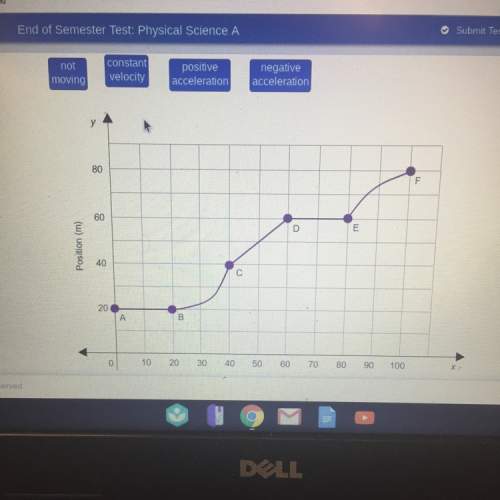
Physics, 03.09.2019 20:20 KJourdan19
Apartridge of mass 4.90 kg is suspended from a pear tree by an ideal spring of negligible mass. when the partridge is pulled down 0.100 m below its equilibrium position and released, it vibrates with a period of 4.19 s .
(a) what is its speed as it passes through the equilibrium position?
(b) what is its acceleration when it is 0.050 m above the equilibrium position?
(c) when it is moving upward, how much time is required for it to move from a point 0.050 m below its equilibrium position to a point 0.050 m above it?
(d)the motion of the partridge is stopped, and then it is removed from the spring. how much does the spring shorten?

Answers: 3


Other questions on the subject: Physics

Physics, 22.06.2019 02:40, jordynsmith02
If the wheels lock when braking suddenly the vehicle: a: loses traction b: lose steering wheel ability c: gain speed slightly d: gain steering ability
Answers: 1


Physics, 22.06.2019 07:30, jaquezdaking4919
The slope of a velocity time graph over any interval of time gives the during that interval
Answers: 2

Physics, 22.06.2019 13:00, caleb1009
At a certain instant after jumping from the airplane a, a skydiver b is in the position shown and has reached a terminal (constant) speed vb = 52 m/s. the airplane has the same constant speed va = 52 m/s, and after a period of level flight is just beginning to follow the circular path shown of radius ρa = 2330 m. (a) determine the velocity and acceleration of the airplane relative to the skydiver. (b) determine the time rate of change of the speed vr of the airplane and the radius of curvature ρr of its path, both as observed by the nonrotating skydiver.
Answers: 3
You know the right answer?
Apartridge of mass 4.90 kg is suspended from a pear tree by an ideal spring of negligible mass. when...
Questions in other subjects:




Mathematics, 26.07.2019 20:00

Social Studies, 26.07.2019 20:00





























